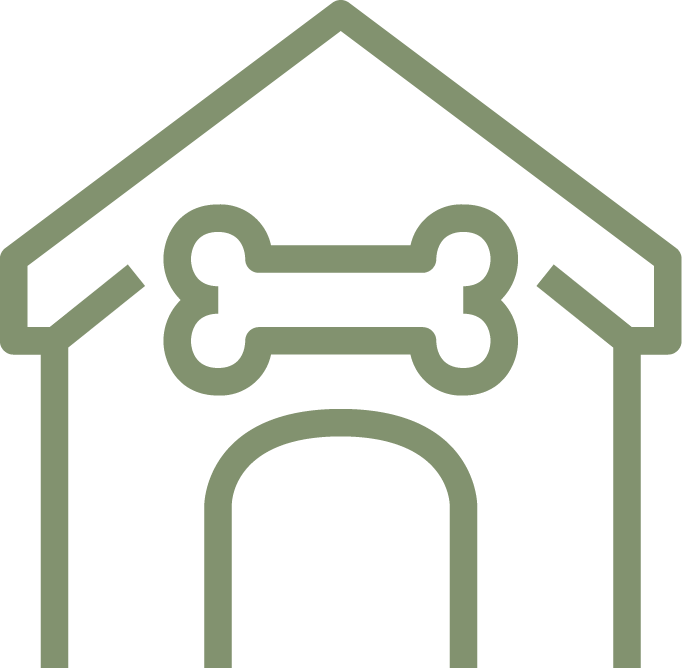How to Help Manage Your Dog’s IVDD Naturally
Help Manage Your Dog’s IVDD
Most people associate spine issues with an injury or as a result of aging. However, with IVDD (Intervertebral disc disease), which is a spinal cord disease that affects dogs. With IVDD, a pup’s discs lose their plasticity, resulting in early degenerative damage to the spine. IVDD typically progresses slowly, with painful flare-ups that often impact a dog’s overall health over time. Below are some of the dog breeds prone to IVDD. If you have one, make sure to know the symptoms just in case you need to help manage your dog’s IVDD.
-
Bulldog
-
Corgi
-
Dachshund
-
Pekingese
-
Pug
-
Shih Tzu
What Are the Symptoms of IVDD?
Having had a dog who suffered from IVDD, my experience of noticing the symptoms was alarming. One day our Chihuahua was sprawled out on the floor and unable to move. We had to take him to a neurologist who helped us identify the issues. Now, with hindsight, I think there were signs that I missed. Here are some things to watch for:
-
Neck pain, stiffness, and hesitancy to rotate the head
-
Maintaining a head position that is lower than normal
-
Hunched back
-
Knuckling or dragging a paw or leg
-
Muscle atrophy, stiffness, or weakness
-
Pain when moving or when touched
-
Wiggle or sway walking
Also, a dog with IVDD may knuckle or drag the same paw or leg, or a different paw or leg. The pain, paralysis, stiffness may move around to different appendages when flares occur. In the beginning, it may seem like your fuzzball was just momentarily injured or stiff. But gradually over time, the symptoms become much stronger and last longer until slowly they become a continual state for your pup.
Why Is IVDD More Common In Certain Breeds of Dogs?
What research has found is that smaller, short dogs with stubby legs and long backs, labeled as chondrodystrophoid (or chondrodysplastic), are predisposed to develop IVDD (source). This is most often due to the fact that their bodies are out of proportion to their appendages, and apply a lot of pressure along the spine. Basically, these breeds can have problematic development of their cartilage. While it may never be a problem, it is something to watch out for if you have a chondrodystrophoid breed.
What Can You Do to Help Manage Your Dog’s IVDD?
Surprisingly, there is a lot you can do. Right off the bat, the most important thing you can do if you have a breed of dog that is more likely to develop IVDD is to monitor their weight. Keeping your dog at or just a tiny bit below their ideal weight is extremely helpful as it places much less stress on the spine. Also, gentle, daily exercise is very good – a walk at a natural pace is wonderful for dog’s predisposed to IVDD. Just be careful to monitor your dog such that s/he doesn’t jump or arch their back in an exaggerated manner. Primarily, your goal is to protect your pup’s spine.
Physical therapy is also a great adjunct treatment. If you have the ability to take your dog to hydrotherapy, we highly recommend it. Also, doing balance work on a half ball is excellent for keeping your pup’s muscles working. Another thing that helps is massage, stretching, and acupuncture. These holistic approaches often have helped dogs keep their spines supple and flexible.
How Is IVDD Treated
Once your vet has identified the potential for IVDD you will most likely treat your pup with crate rest for six weeks. This allows your pup’s body to heal and benefit from anti-inflammatories (and potentially steroids) to reduce pain and swelling. Your dog’s care plan will depend on the severity of symptoms. Our Chihuahua was diagnosed with IVDD at a young age. This isn’t uncommon. However, treating this disease with long-term steroid and anti-inflammatory consumption can lead to other ailments. So cycling medications can be extremely beneficial to your pup’s health.
This is why one of the key ingredients that can help manage your dog’s IVDD is #CBD. CBD is one of the most focused and reliable tools that you have to help your dog tackle inflammation and pain. Symptom management is key in dogs with IVDD. The goal is to keep your pup healthy and exercised while also minimizing activities that increase inflammation, like jumping, arching, or hyperextending. For our pup who had IVDD, CBD was a huge blessing and gave him many extra years of living a more pain-free life!
Intervertebral disc disease


